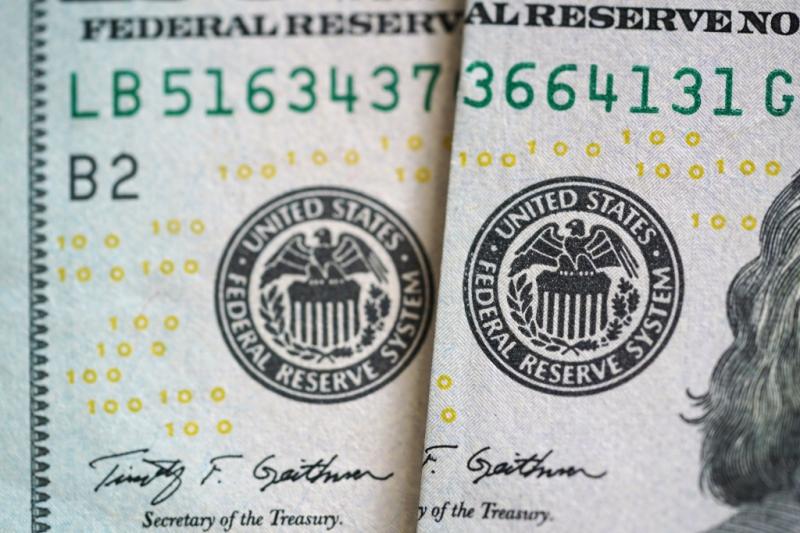Looking at the world, the US debt crisis | Media and insiders: The conclusion of the US debt ceiling agreement may not be "good news"
Xinhua News Agency, Beijing, May 29-The Democratic and Republican parties in the United States have been fighting over the federal government debt ceiling for several months, which has caused the financial market to continue to be under pressure. The two sides announced a preliminary agreement on this issue on the evening of 27th, which seems to bring positive signals to the market. However, according to some media and industry insiders, once the deadlock on the debt ceiling is temporarily resolved, it will be followed by further large-scale borrowing by the US government, which may bring instability to the financial industry.
US President joseph robinette, Democrat, Speaker of the House of Representatives and Republican Kevin McCarthy announced on the evening of 27th that they had reached an agreement in principle on the federal government debt ceiling, breaking the deadlock between the two parties that lasted for several months.

On May 24th, traders worked in the trading floor of new york Stock Exchange. Xinhua News Agency (photo by Guo Ke)
Reuters analyzed on 28th that this agreement "may avoid a debt default that undermines economic stability", and this effect of "ending uncertainty" is welcomed by financial markets. However, the agreement may only make investors "temporarily excited", and the market "may soon discover" that this is actually "bad news".
According to Reuters’s analysis, once the debt ceiling agreement is reached, the U.S. Treasury is expected to issue a large number of bonds in a short time to "quickly fill the void in the national treasury", which will "suck hundreds of billions of dollars from the market".
The Bank of JPMorgan Chase recently estimated that the US Treasury may issue Treasury bills with a total amount of nearly $1.1 trillion within seven months after the federal government debt ceiling is raised.
Reuters also explained that if the US government issues bonds on a large scale in the short term and implements the current high interest rate, it may attract a large amount of funds originally invested in other targets or stored in banks. This will not only aggravate the recent widespread problem of deposit outflow in the banking industry, but also make banks face greater liquidity pressure. It may also push up the interest rates of short-term loans and bonds, and further increase the financing costs of enterprises already under pressure in the high interest rate environment.

This is a US dollar bill photographed in Washington, USA on March 23rd, 2020. Xinhua News Agency reporter Liu Jie photo
Terry Ouizman, global foreign exchange and interest rate strategist of Macquarie Group, Australia, said that the market "has raised the expectation that the US Treasury will issue a large number of bonds in the next few weeks to replenish its own funds", which is "an unsolved problem" in the debt ceiling agreement.
According to the estimation of analysts of BNP Paribas, before the end of September this year, the scale of funds flowing from bank deposits and other aspects to US Treasury bills may reach about 800 billion US dollars.
Mike Wilson, an investment strategist at Morgan Stanley in the United States, said that the issuance of treasury bonds by the US Treasury Department "will significantly absorb market liquidity".
Alex Leonard, head of the investment department of ruffer, a British investment management company, said: "We are worried that if the financial system starts to lose liquidity, it will lead to environmental deterioration and the market will easily collapse."
Daniel Critter, an executive of Capital Markets Company of Bank of Montreal, Canada, said that the exhaustion of bank liquidity "may have a more significant impact on risky assets, especially at a time when the uncertainty of the financial industry has increased".

This is a street sign taken outside the new york Stock Exchange on January 18th, 2022. Xinhua News Agency (photo by Guo Ke)
Due to the long-term fiscal deficit, the federal government of the United States needs to continuously raise the debt ceiling set by Congress, which is currently $31.4 trillion. The United States hit the debt ceiling on January 19 this year, and the Ministry of Finance subsequently took "unconventional measures" to avoid debt default. Finance Minister janet yellen warned that the relevant measures may only last until the beginning of June.
According to the statistics of the relevant departments of the US Congress, Congress has adjusted the debt ceiling 102 times since the Second World War. The struggle between the two parties has intensified in recent years, and the debt ceiling negotiations have been constantly wrangling, leading to chaos such as market turmoil and government lockout.
The debt ceiling agreement announced by Biden and McCarthy still needs the approval of the Senate and House of Representatives. Due to the serious differences between the two parties on the agreement, it is still challenging to complete the legislative process as scheduled before the federal government defaults on its debts. (Gao Jie)